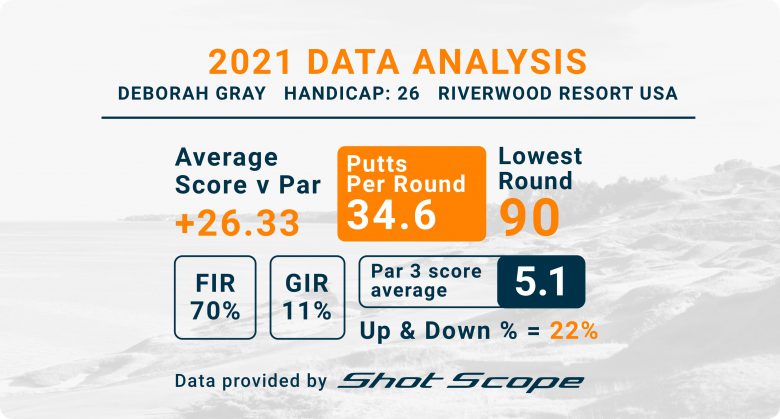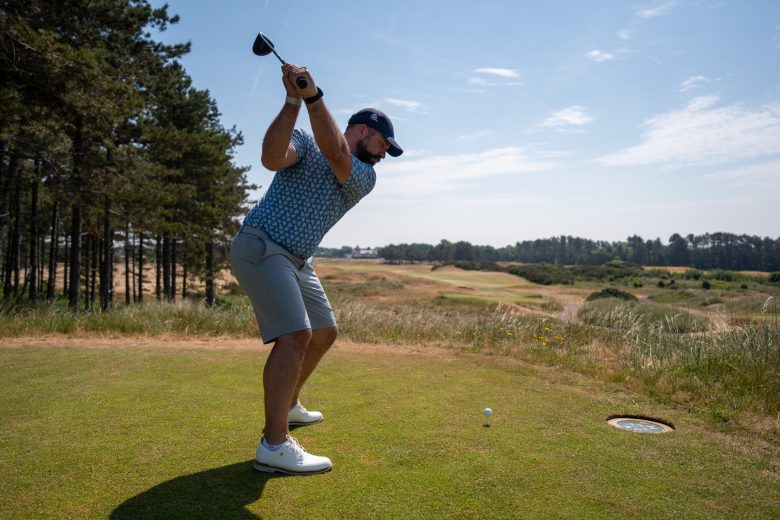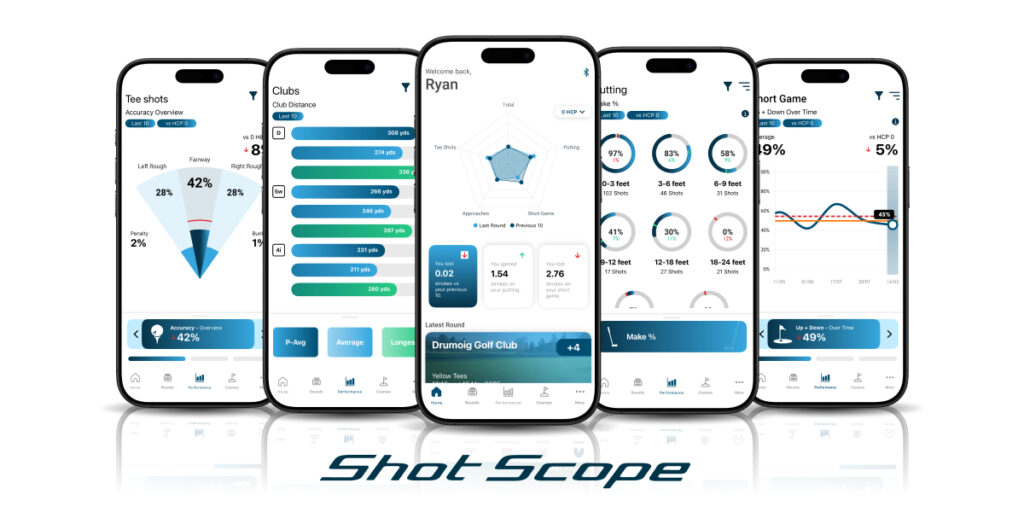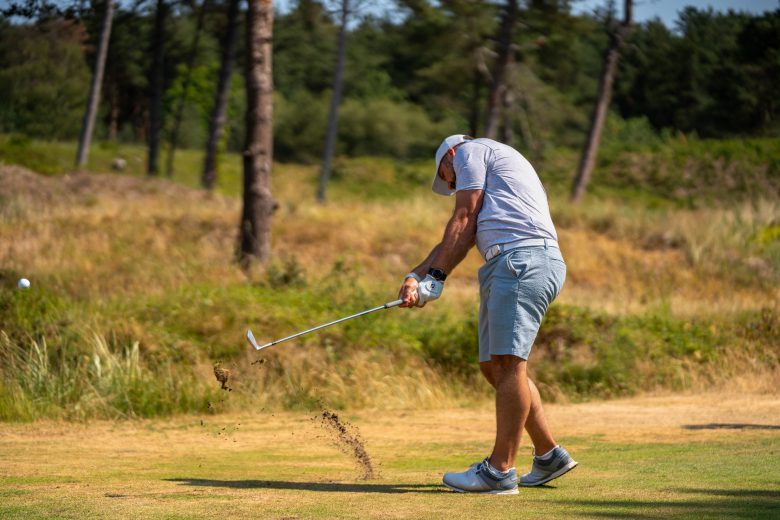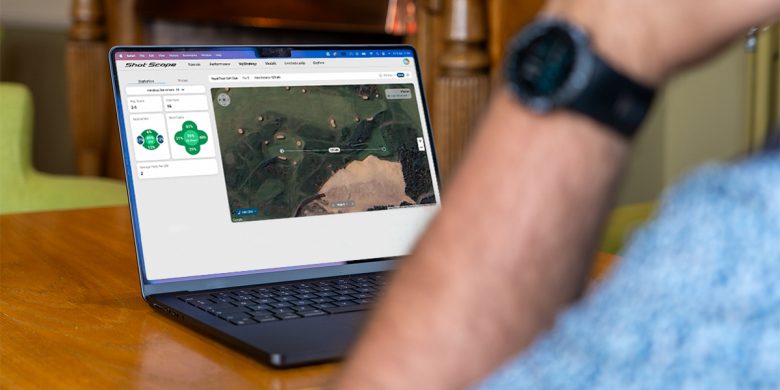Shot Scope user Deborah is actively trying to get her handicap down to 18. Currently a 26 index, Deborah scores consistently in the 90s but has never broken 90. We look at what she can do to break 90.
The goal of this data analysis is to identify what Deborah does well, and highlight the key areas she should look to improve in order to break 90 and subsequently get her handicap index down to 18.
For the purpose of this analysis comparisons will be made against Shot Scope’s defined handicap benchmarks, with the target being to be better than the 20 handicap across all areas of the game.

After a quick analysis of Deborah’s statistics it is evident that she is already doing a lot of things well. For example she hits 70%, which is well above the average and also much higher than our 20 handicap benchmark of 46%.
Accuracy off the tee is not Deborah’s only strength. Short game around the greens is where Deborah performs better than not only the 20 handicap but the 15 handicap benchmark, getting up and down 22% of the time.
Tee shots and short game are in a good place, so where can Deborah improve?
On first look, you would notice that greens in regulation are low at 11%, especially considering her high fairway percentage. To break this down we need to look at a number of factors, the first being how far Deborah hits each club in the bag.
Deborah’s P-Average Club Distances
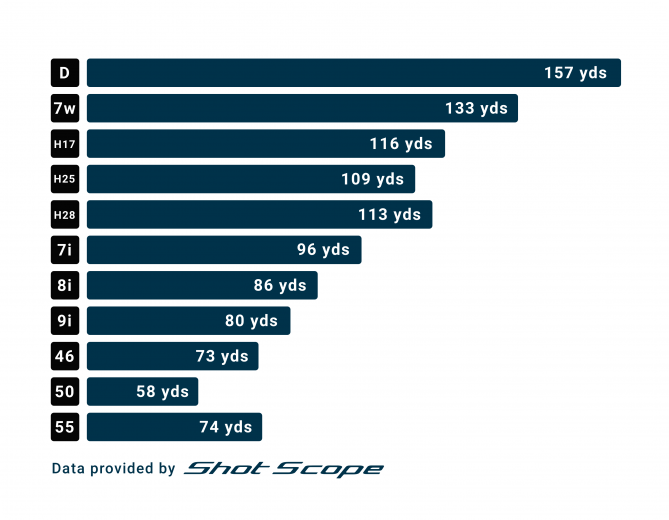
You can see that Deborah doesn’t hit the ball that far, however this helps explain her 11% greens in regulation statistic.
It might not be that Deborah is poor at approach shots, more just that she can’t physically reach some par 4s and 5s in 2 or 3 shots.
Therefore we need to take a closer look at Deborah’s approach play, but more specifically from inside 130 yards as this is the distance where you would expect her to be able to reach the green (based on her 7 wood p-average).
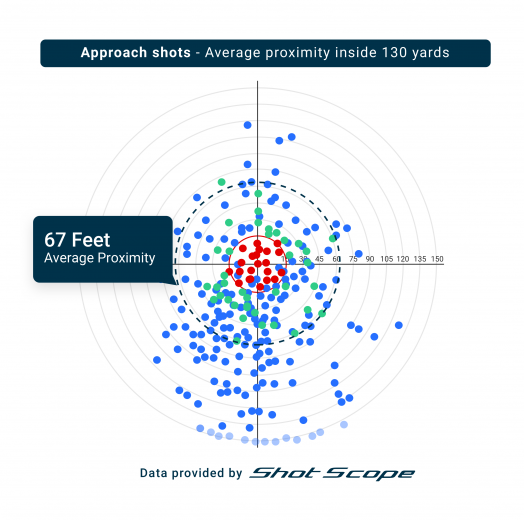
Deborah averages 67ft proximity from 50-130 yards, this is comparable with Shot Scope’s 20 handicap benchmark of 66ft average proximity from this distance.
Within the performance statistics generated by the V3 watch, there is a green hit % in addition to greens in regulation. This uses any shot attempting to hit the green, regardless of whether it is in regulation or not.
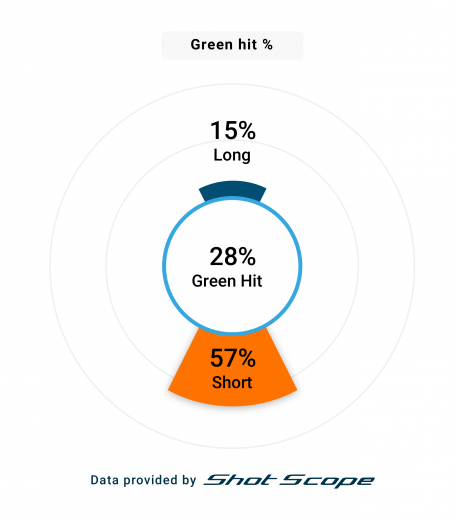
The green hit % shows that Deborah is hitting more greens that first thought, however 28% is still 9% shy of the 20 handicap benchmark which we would be looking to be better than.
The stand out on this graph is the percentage missed short of the green. Deborah misses the green short 57% of the time and this is where the real area for improvement lies. For reference, the 20 handicap benchmark is 37% greens hit with 39% missing short.
How might Deborah achieve this?
One suggestion would be to play for the ‘back of the green’ yardage on her V3 watch. Being a mid-high handicap golfer it is rare that every shot will be struck perfectly.
Adapting to this strategy on the course simply allows for those slightly miss-struck shots. In addition to this, Deborah can work with her PGA pro to identify if there is anything she can change technique wise, to help her improve strike.
Work on putting
The aim for Deborah is to be better than Shot Scope’s 20 handicap benchmark and currently averaging 34.6 putts per round is 1.5 putts more per round than what we are aiming for. With low green hit percentages, putting is the area Deborah should look to try and save some shots.
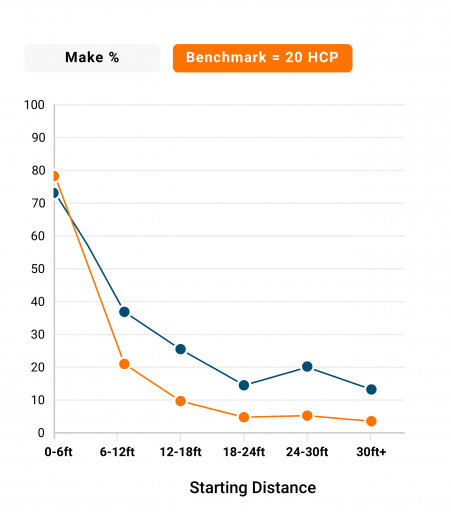
Taking a look at the Make % graph, we can see that Deborah is a very good mid-range putter, holing almost twice as many putts against the 20 handicap benchmark.
However we are looking to improve and the 73.6% holed from 6ft and in needs to be higher. The goal here is to be better than the 20 handicap benchmark which is 78%.

By improving her holing out from inside 6ft, Deborah is also more likely to reduce the number of 3 putts per round.
Based on the table above, if Deborah can go from 3 putting every 5 holes, to every 7 or 8 holes, she could save around 1 shot per round. This table also highlights the how 3 putting is costly to the higher handicap golfer, as there is a significant improvement as handicap decreases.
Another area that will help Deborah reduce her number of 3 putts is by focussing on pace putting from 24-30ft in particular.
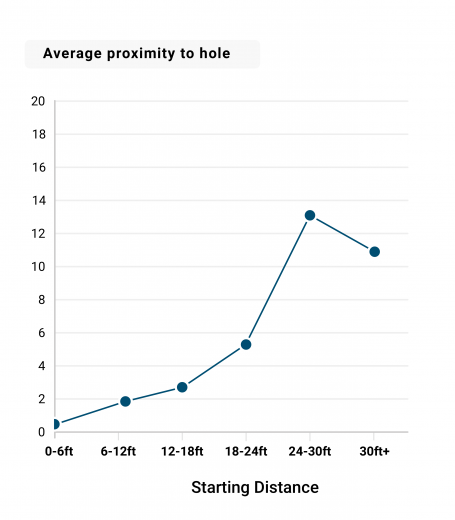
Looking at 24-30ft putts, Deborah leaves herself an average of 12.8ft for her second putt, by improving her pace putting from this distance, she should be able to reduce this significantly. Ideally we would like to see this around 8-9ft at most.
Going forward Deborah should look to practice both her holing out and pace putting with a qualified PGA instructor.
There are many drills and practices that will help improve this, so by working alongside her instructor they can identify what works the best for her specifically.
Conclusion
The main conclusions from this article are that there are areas Deborah can improve without changing anything drastically about her swing or game.
Her tee shots and short game are good enough for what she is trying to achieve. However it is her approach play and putting that she should focus on.
Deborah should focus on hitting more club into the green in order to reduce the percentage she leaves short and also aim to 3 putt a maximum of 2 times per round.
If Deborah can make the improvements outlined in this analysis, she should be able to break 90 and start the journey to reducing her handicap to 18.
The data in this article has been generated through use of the Shot Scope V3 GPS Watch. The V3 has now been superseded by the V5 GPS watch. Shot Scope’s online dashboard and free mobile app then provides access to 100s of detailed statistics about your game. Know your game with Shot Scope.
